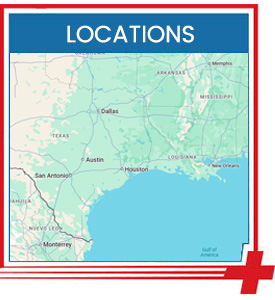Toenail Removal Doctor in La Grange, TX
When a toenail grows into the surrounding skin, it creates an ingrown toenail, which hurts and is uncomfortable. Fast Aid Urgent Care may assist if you require treatment for an ingrown toenail. Our doctor, Dr. Curtis Grote, MD, can help you receive prompt pain relief, treat infection, and avoid future ingrown toenails. For more information, please contact us or book an appointment online. We serve patients from La Grange, TX and surrounding areas.




Table of Contents:
Do ingrown toenails need to be removed?
What is the fastest way for an individual to get rid of an ingrown toenail?
How much does removing an ingrown toenail cost?
When should I visit a podiatrist to address an ingrown toenail?
If you’ve noticed the onset of an ingrown toenail, you may be uncertain about the appropriate course of action. While not all cases of ingrown toenails require professional treatment, it’s crucial to address the issue promptly to avoid lingering or worsening problems.
Left untreated, the condition can lead to increased pain, swelling, and potential infection. When the ingrown toenail is mild and shows no signs of infection, such as being slightly tender, you can attempt some home remedies initially. Soaking your feet in warm water multiple times a day may offer some benefits. However, home remedies may not always yield successful results, and in many cases, removing the ingrown toenail becomes the most effective solution.
When it comes to getting rid of ingrown toenails, the fastest and most effective procedure will be dictated by the specifics of each patient’s condition. If you find that home remedies have not effectively resolved your ingrown toenail, your healthcare provider may recommend various treatment options tailored to your specific situation.
Your healthcare provider may recommend gently lifting the ingrowing edge of the nail and placing cotton or a splint underneath it for mild cases of ingrown toenails. This technique separates the nail from the overlying skin, allowing the nail to grow above the skin’s edge for 2 to 12 weeks. When using this method, it is necessary to soak the toe regularly while replacing the material daily. Additionally, your healthcare provider may prescribe a corticosteroid cream to apply after soaking.
In more severe cases with inflamed skin, pain, and pus, your healthcare provider might numb the toe and perform a partial removal of the ingrown portion of the nail. After this procedure, it may take approximately 2 to 4 months for the toenail to grow back.
If you experience recurrent ingrown toenail issues on the same toe, your healthcare provider may recommend removing a portion of the nail along with the underlying tissue (nail bed) as a preventive measure. The procedure involves numbing the toe and employing techniques like using a chemical or laser.
Alternatively, your healthcare provider may suggest a method where they use tape to gently pull the skin away from the ingrown nail.
The cost of removing an ingrown toenail can vary based on the specific condition of the toenail and the necessary procedure, as well as the pricing structure of individual clinics. Typically, ingrown toenail treatment can be conducted during the initial consultation and is offered at a reasonable cost. This conservative approach involves trimming away the ingrown part of the nail, providing immediate relief and is often sufficient to manage the ingrown nail for many individuals.
For patients covered by health insurance, the usual out-of-pocket costs for ingrown toenail treatment include a copay or coinsurance, typically ranging from 10% to 50%. Health insurance plans usually cover ingrown toenail treatment.
For those without health insurance, the cost of at-home treatment for an ingrown toenail is usually less than $50. However, if a visit to the doctor and a procedure to remove all or part of the toenail are required, the cost can range from $200 to $1,000 or more. Urgent care centers, such as Fast Aid Urgent Care, typically offer among the most affordable options for ingrown toenail removal.
Certain signs suggest it might be best to consider removal, such as severe pain, difficulty wearing shoes or performing daily tasks, any indications of infection like swelling, redness, or pus, and if you have conditions linked to poor blood flow or nerve function in the feet, such as diabetes. If you experience recurring issues with ingrown toenails, removal may be a suitable option to address the problem comprehensively.
Urgent care centers typically offer the most affordable options for ingrown toenail removal. Ingrown toenail removal is available at Fast Aid Urgent Care. For more information, please contact us or book an appointment online. We serve patients from La Grange TX, Rabbs Prairie TX, Halsted TX, Hostyn TX, Mullins Prairie TX, Ammannsville TX, and surrounding areas.

Additional Services You May Need
▸ Urgent Care
▸ Walk-in Family Care
▸ Children’s Health
▸ Sports Physicals
▸ DOT Physicals
▸ Pediatric Urgent Care
▸ Immunization

Additional Services You May Need
▸ Urgent Care
▸ Walk-in Family Care
▸ Children’s Health
▸ Sports Physicals
▸ DOT Physicals
▸ Pediatric Urgent Care
▸ Immunization





